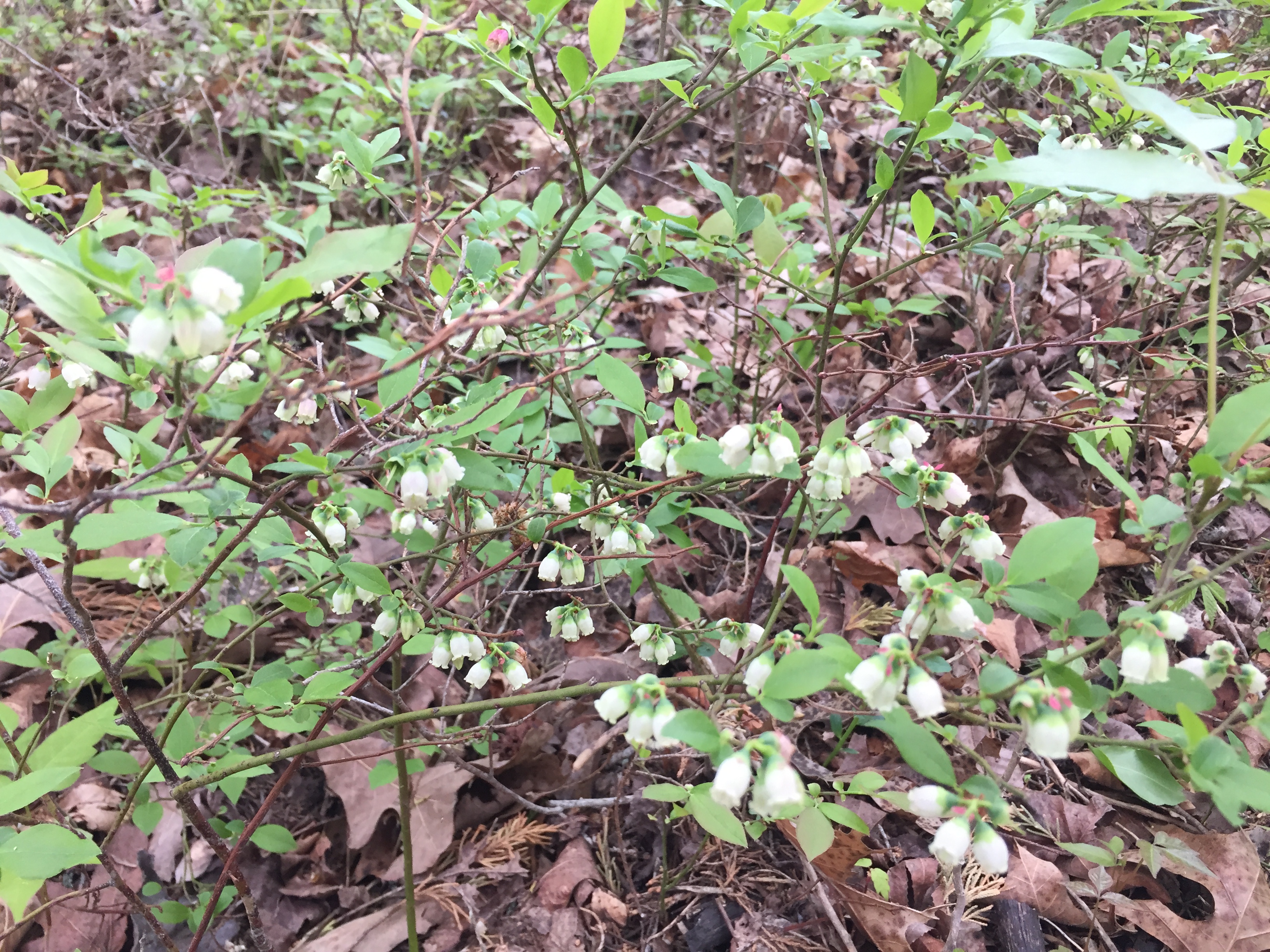Resource Library
Plant of the Week: Vaccinium pallidum; Low Bush Huckleberry
Blueberry, huckleberry, farkleberry – good names all – for the woody shrubs found growing throughout Arkansas in the dry shade of oaks or clinging to the edge of a sandstone ridge. A friend and I recently walked through her woodland and tried, without benefit of reference, to decide what another Madison County resident – Orval Faubus – was referring to when he talked of the farkleberry. So, let us consider our native blueberries, starting with the low bush huckleberry (Vaccinium pallidum).
Blueberries belong to the heath family along with such flower garden favorites as azaleas and rhododendrons. About 500 species are described from the northern hemisphere with 25 considered in the Flora of North America. Of these, three are found in the mountainous parts of Arkansas along with the related species Gaylussacia baccata, the low bush huckleberry.
Of our native blueberries, V. pallidum, is the most widely distributed in Arkansas and the United States. It is found throughout the Ozarks of Arkansas, Oklahoma and Missouri and the Ouachita Mountains and, in the states east of the Mississippi River from northern Alabama to Michigan and Maine. Low bush blueberry typically grows on well drained, low-nutrient acidic soils in the dappled shade of oaks that are restrained by a rocky subsoil. In the northeastern states it grows in full sun in sandy, acidic soils where it forms thickets and has long been harvested as a wild crop.
Low bush blueberry – also called hillside blueberry or Blue Ridge blueberry, is a deciduous shrub growing about two feet tall and wide but spreading widely by underground rhizomes where large colonies may form. The light green leaves are oval in outline, 1-2 inches long and light green to blue green in color. Fall color is red.
The urn shaped white to pinkish flowers appear with the leaves in mid spring and are around a quarter inch long. Flowers appear in panicles of around ten individual blooms. The end of the flower is slightly restricted with the tip split into five pointed lobes. The tasty waxy blue to shiny black berries ripen in mid to late summer and are from a quarter to half inch across and usually produced in respectable numbers in a well-developed patch.
Unraveling the etymology of the common names associated with the Vacciniums is an interesting endeavor. The oldest name associated with them is “whortleberry,” a middle English name first used by New England colonists when they first encountered the plant. Having no native Vaccinium in England, they borrowed the name from something it reminded them of in the old country.
That name seems to have persisted through the end of the 18th century when, in the early 19th century huckleberry begins to be used. “Huckle” may be from a low German slang for a person (berry?) of little consequence. In other words, a small, insignificant berry. Mark Twain’s Huck strengthens the slang usage of the word.
By the middle of the 19th century farkleberry is added to the mix of names, but its origins are not clear. By 1900, huckleberry had been adopted by botanists for Gaylussacia and blueberry for the Vaccinium. But common usage continued in the back woods, and huckleberry (and sometimes farkleberry) is used for the taller V. arboreum and blueberry (and sometimes huckleberry or farkleberry) for the low bush blueberry.
The Arkansas Democrat political cartoonist George Fisher enshrined the farkleberry in Arkansas political history when he included a sketch of the bush with a caricature of Orval Faubus. The Encyclopedia of Arkansas gives a full history of the political roast that became known as the Farkleberry Follies that ran every other year from 1967 to 1999 in Little Rock. Probably Faubus’ “farkleberry” was the tall-growing V. arboreum, but the low bush blueberry is more common and produces more berries. He would have known both from his backwoods Ozark farm.
Low bush blueberry has not made its way into the nursery trade. If a proper blueberry is wanted for the garden, any of the named selections of highbush blueberry would be preferable and produce more fruit.
For more information about horticulture or to see other Plant of the Week columns, visit Extension’s Website, www.uaex.uada.edu, or contact your county extension agent. The Cooperative Extension Service is part of the U of A Division of Agriculture.
